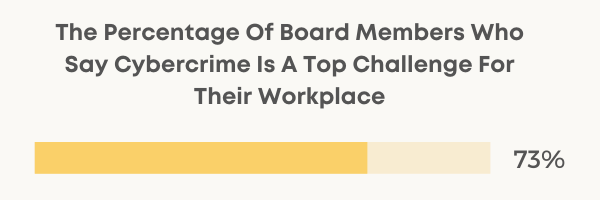Leadership in the workplace will help bring out the best of everyone’s abilities.
Furthermore, it will motivate team members to work towards the same shared goal.
So, how can we use statistics on leadership in the workplace to our advantage? They can help us achieve an effective workplace and, in turn, reap the benefits of the long-lasting impact.
Let’s find out!
Key Statistics On Leadership In The Workplace (Editor’s Pick)
- 38% of leaders fail in the first 18 months.
- Only 5% of businesses implement leadership development at all levels.
- 79% of employees left their jobs due to a lack of appreciation.
- In the workplace, only 58% of managers received leadership training.
16 Statistics On Leadership
In The Workplace
1. Almost 80% of employees left their jobs for lack of appreciation.
According to leadership statistics, 79% of employees who left their jobs said their reason was lack of appreciation. In North America, 65% of workers report they have not been recognized even once in a whole year of work. With the right leaders, recognition can help companies retain talent.
Source: O.C. Tanner
2. The workplace is not helping to develop leadership skills for 63% of millennials.
When surveying millennial workers, Deloitte asked them how the workplace helps them develop their leadership skills. As it turns out, 63% of employees who are the least loyal said that their workplace does not do enough to help them develop leadership skills.
Source: Deloitte
3. Only 15% of Fortune 500’s board of directors are women.
When talking about the workplace of directors, boards of directors are majorly understaffed with women. As it turns out, out of all the director boards from Fortune 500, only 15% are women. This should change in the future if and when companies realize how many positives a female leader can bring along.
Source: The Harvard Business Review
4. Only 5% of businesses have implemented leadership development at all levels in the workplace.
While 83% of businesses agree it is important to develop leaders at all levels, only 5% have managed to do it. To get the most out of a business, they have implemented leadership development at all levels, according to data from 2015.
Source: Brandon Hall


5. Workplace stress causes a $300 billion loss for US businesses annually.
Leaders have a task to, among other things, keep their employees happy. If they do not, it can cause a lot of stress for the employees. Moreover, stressed employees are costing businesses a lot. In fact, according to data statistics, workplace stress costs US businesses $300 billion per year.
Source: American Institute of Stress
6. 78% of business leaders focus on improving engagements with employees.
A stable workplace environment means that leaders need to find a way to engage with their employees. In fact, 78% of business leaders say that they focus on trying to improve their engagement with employees, as well as trying to improve employee retention.
Source: Deloitte
7. Within the first 18 months, 38% of business leaders fail.
The share of business leaders who fail in the first 18 months of being appointed ranges from 38 to 50%. Moreover, even more of the newly appointed executives do not live up to the expectations of those who hired or promoted them.
Source: Centre for Creative Leadership
8. Only one in 10 CEOs are natural leaders.
While only 10% of CEOs are naturally born leaders, everyone else has to work their way up to the top. Natural leaders know how to boost productivity, who to engage with their team members, and how to retain employees. Moreover, another 20% have some sort of talent for it and can become good leaders with training.
Source: Gallup
9. Cybercrime is the biggest challenge in the workplace for 73% of board members.
In 2020, around 73% of CIOs reported they experienced sensitive data leakage, according to a Microsoft survey. This kind of crisis is common in businesses nowadays and leaders have to find a way to overcome such a crisis and come out on top.
Source: Microsoft


10. Almost one in two leaders plan to focus on different scenarios in the workplace post-pandemic.
Around 47% of leaders say they will focus on different scenarios after being hit by a pandemic in early 2020. Around 27% of leaders will focus on high-impact unlikely scenarios, and 32% will shift their focus to other additional more likely events.
Source: Deloitte
11. Organizations with above-average workplace diversity (45%) earn more from innovation than low-diversity organizations (26%).
Workplace diversity is important for many reasons, including revenue earnings. According to research, companies that have above-average workplace diversity earn more in revenue from innovation, as well as more money overall, compared to companies with low-diversity workplaces.
Source: Levine & Thought Leaders
12. Most workplace accidents (80%) happen because of negative work culture.
Negative work culture reduces employees’ productivity, making leaders have to work to get it back on track. What leaders have to do is acknowledge employees’ efforts and offer an incentive for them. Otherwise, 60% to 80% of workplace accidents happen because of the stress caused by negative work culture.
Source: American Psychological Association
13. Around 15% of candidates decline offers from companies with negative work culture.
Positive work culture is something leaders have to strive for to be able to attract talent, among other things. Even more so, as 15% of candidates admit they decline offers from companies with a negative work culture.
Source: Builtin
14. Employees supervised by highly engaged leadership teams are 39% more likely to be more engaged themselves.
If leaders are engaged with their jobs, it is 39% more likely those working in lower positions will feel more engaged with their jobs, too. Leaders create and maintain a highly engaging culture in the workplace and everyone who wants to become successful at what they do will be able to follow.
Source: Gallup


15. One in three UK employees lack the confidence to put new ideas forward.
Around 32% of employees in the UK say they don’t put ideas forward to their superiors because they lack the confidence for it. This means that leaders have to work more on creating and maintaining a workplace environment where creativity is encouraged and rewarded.
Source: Onrec
16. In the workplace, 58% of managers say they did not receive any leadership training.
According to 2018 research from CareerBuilder, 58% of managers did not receive any leadership training. Without improvement to their skills, managers are can’t lead and help their teams and company progress.
Source: CareerBuilder
Final Verdict
To sum everything up, these leadership statistics in the workplace can help businesses improve by noting what common mistakes in workplace leadership are. Moreover, leadership development statistics and leadership training statistics can tell businesses and leaders what to focus on in the future.


































Find Us on Socials